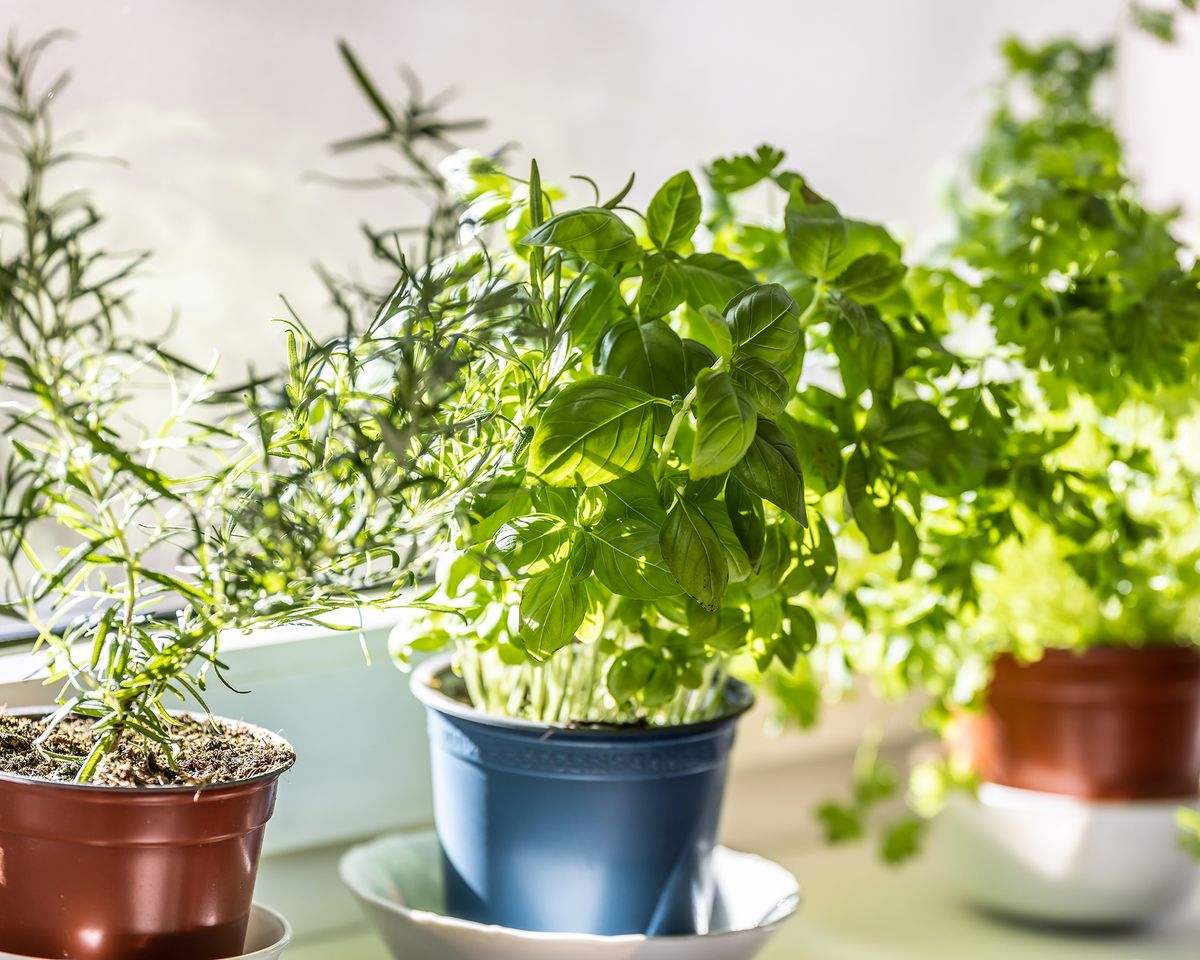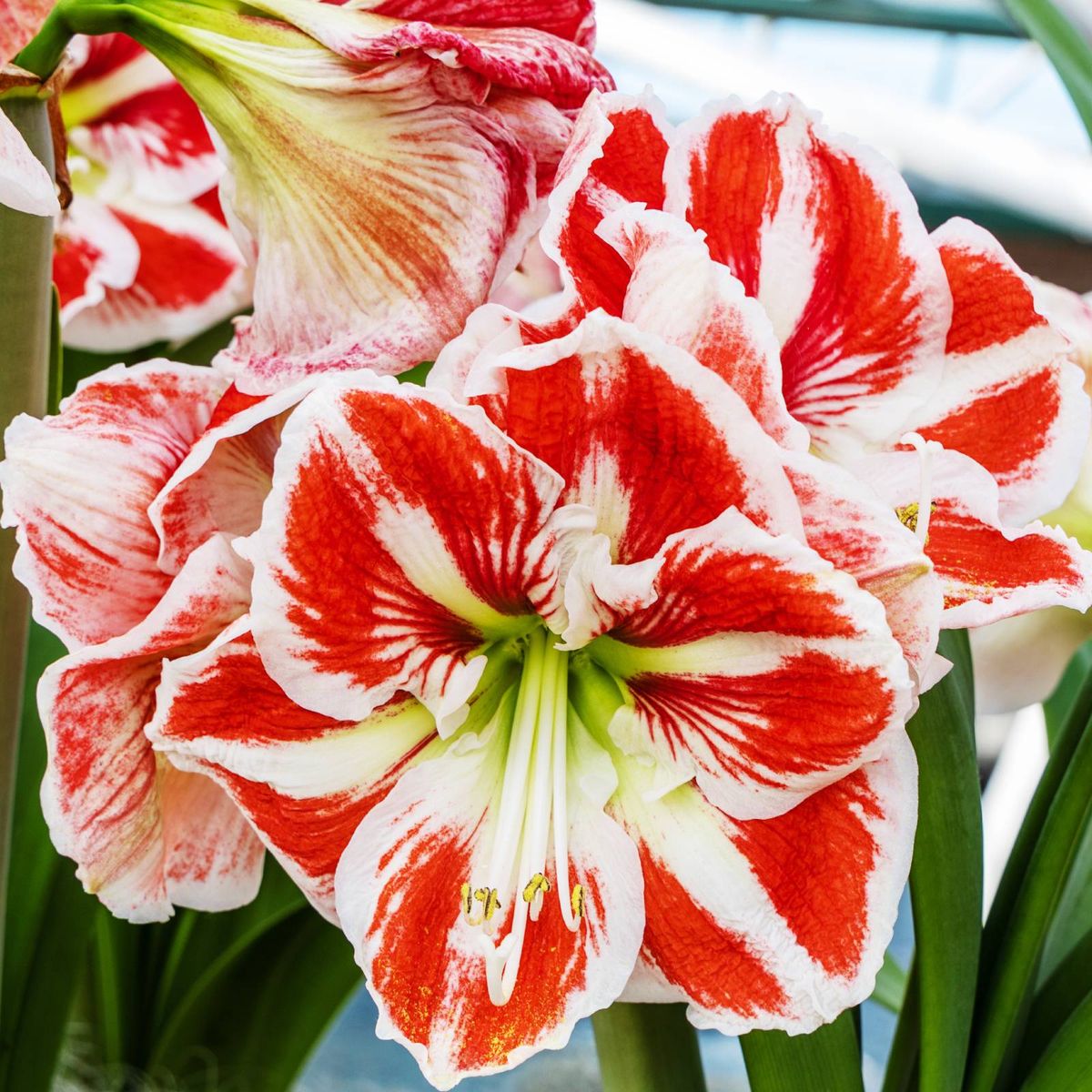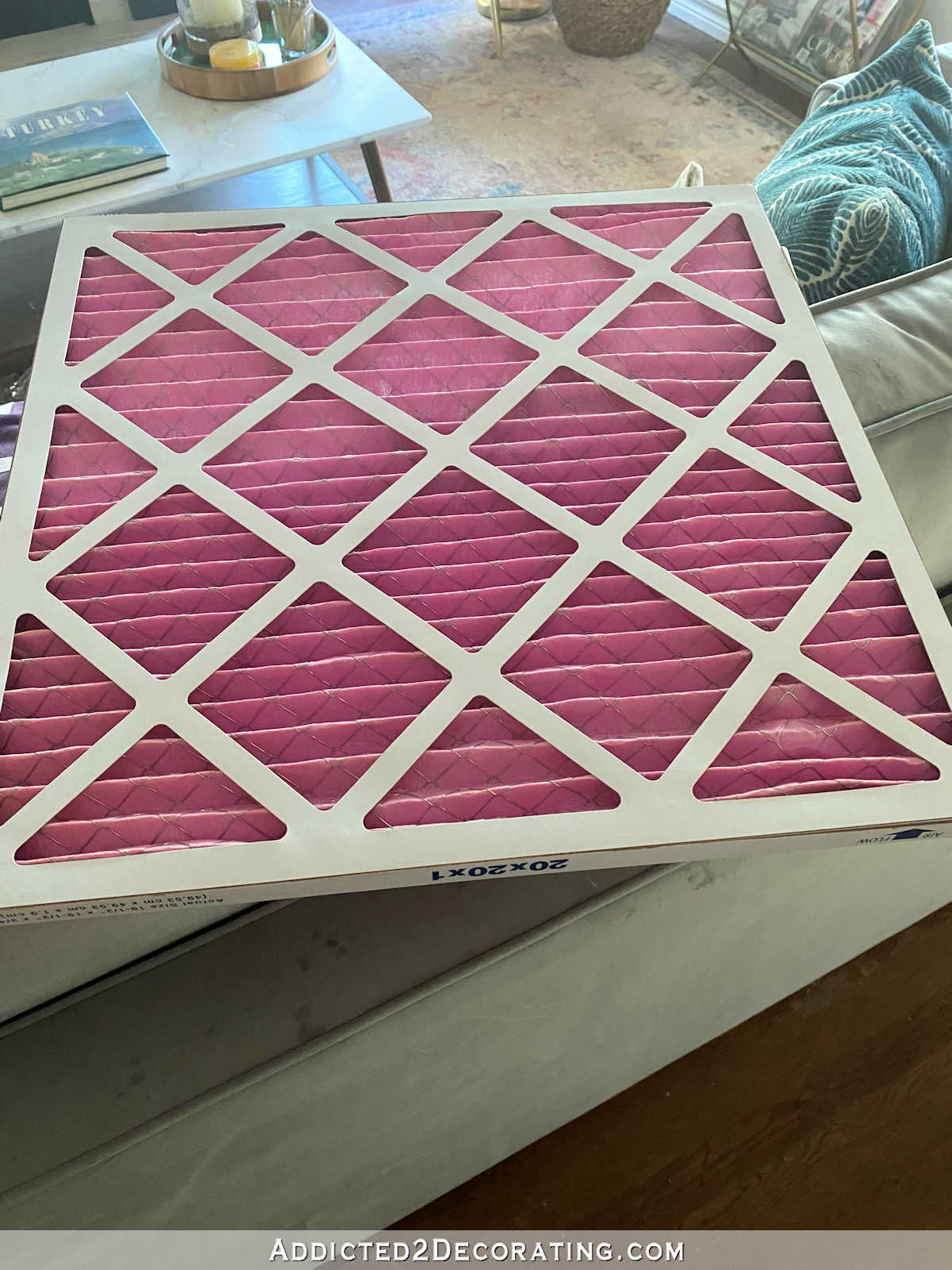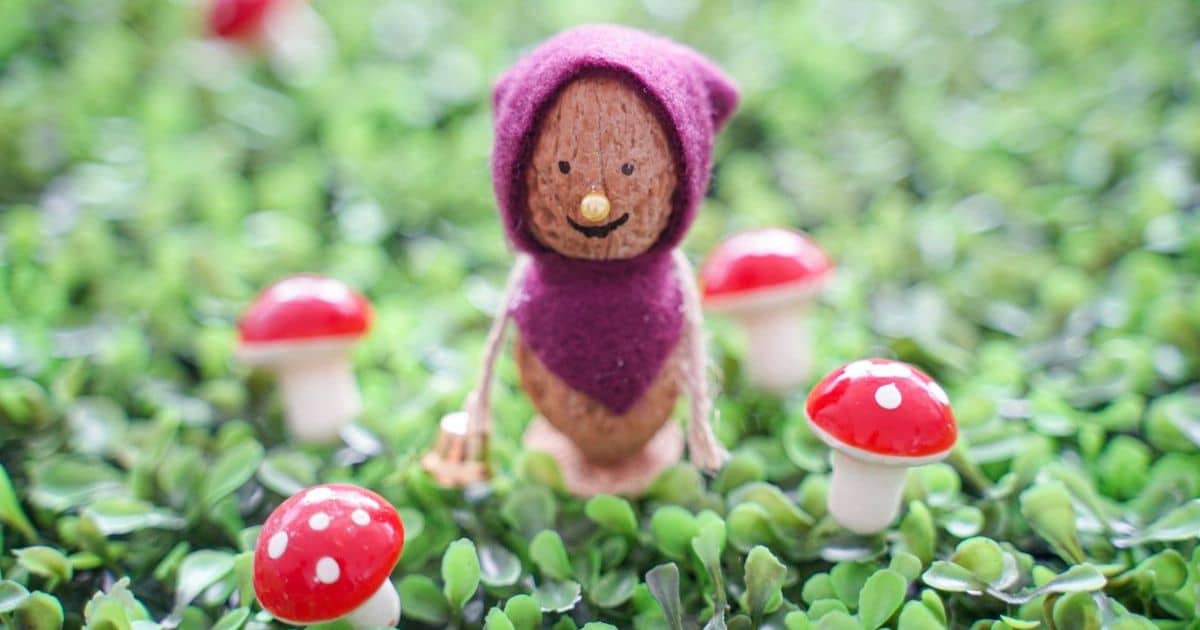‘Pelee’ is a garden mum which bears single flowers in russet-red. Chrysanthemum is made up of both annuals, and perennials and are best known for their showy flowers. There are twelve different flowerhead forms which distinguish the different chrysanthemums. Colors range from yellow to red to pink to brown and bloom time ranges from midsummer through fall.
There are seven main groups of chrysanthemums:
1. Exhibition, which are perennials grown for show, garden use, and cutting.
2. Spray, which produce multiple flowers per stem and are grown for garden decoration and cutting.
3. Charm, which are dwarf, bushy, and rounded in habit and are grown primarily for indoor decoration, exhibition and bonsai.
4. Cascade, which are similar to charm, but trained as fans, pillars, pyramids, or cascades, are grown primarily for indoor decoration.
5. Pompon, are dwarf and bushy, providing multiple (up to 50), dense flowers per plant.
6. Rubellum, is a group of bushy perennials with a woody base. Leaves are pinnatisect and have a silvery cast and flowers have yellow, daisy-like centers. They are perfect for the border and for cutting.
7. Garden chrysanthemums have a bushy, branching habit and bear clustered flowerheads. Flowering over a long period, they are perfect for the border.
Chrysanthemums do best in full sun in soil that is slightly moist, fertile, neutral to slightly acid, and well-drained. Make sure that plants are fertilized every two weeks from midsummer until buds begin to show color. To ensure a full flush of flowers, discontinue pinching by July 15 in cooler climates, and July 25 in warmer climates. At the onset of winter in really cold areas, crowns may be lifted and stored once tops have been cut back to 6 inches. In milder climates, cut back and mulch well. Because the centers of chrysanthemums die out, you will want to divide the plant and replant it either in the late fall or early spring every couple of years.
Google Plant Images: click here!
Characteristics
Cultivar: Pelee
Family: Asteraceae
Size: Height: 0 ft. to 0 ft.
Width: 0 ft. to 0 ft.
Plant Category: annuals and biennials, landscape, perennials,
Plant Characteristics: low maintenance, round, seed start,
Foliage Characteristics: fragrant, medium leaves, evergreen,
Flower Characteristics: long lasting, old fashioned/heritage, showy,
Flower Color: reds,
Tolerances: drought, heat & humidity,
Requirements
Bloomtime Range: Mid Summer to Late Fall
USDA Hardiness Zone: 4 to 10
AHS Heat Zone: Not defined for this plant
Light Range: Sun to Sun
pH Range: 5.5 to 7
Soil Range: Some Sand to Clay Loam
Water Range: Normal to Moist
Plant Care
 Fertilizing
Fertilizing
How-to : Fertilization for Annuals and Perennials
Annuals and perennials may be fertilized using: 1.water-soluble, quick release fertilizers; 2. temperature controlled slow-release fertilizers; or 3. organic fertilizers such as fish emulsion. Water soluble fertilizers are generally used every two weeks during the growing season or per label instructions. Controlled, slow-release fertilizers are worked into the soil ususally only once during the growing season or per label directions. For organic fertilizers such as fish emulsion, follow label directions as they may vary per product.
 Light
Light
Conditions : Sun
Sun is defined as the continuous, direct, exposure to 6 hours (or more) of sunlight per day.
Conditions : Full Sun
Full Sun is defined as exposure to more than 6 hours of continuous, direct sun per day.
 Watering
Watering
 Planting
Planting
How-to : Preparing Garden Beds
Use a soil testing kit to determine the acidity or alkalinity of the soil before beginning any garden bed preparation. This will help you determine which plants are best suited for your site. Check soil drainage and correct drainage where standing water remains. Clear weeds and debris from planting areas and continue to remove weeds as soon as they come up.
A week to 10 days before planting, add 2 to 4 inches of aged manure or compost and work into the planting site to improve fertility and increase water retention and drainage. If soil composition is weak, a layer of topsoil should be considered as well. No matter if your soil is sand or clay, it can be improved by adding the same thing: organic matter. The more, the better; work deep into the soil. Prepare beds to an 18 inch deep for perennials. This will seem like a tremendous amount of work now, but will greatly pay off later. Besides, this is not something that is easily done later, once plants have been established.
How-to : Planting and Removing Annuals
When planting annuals, begin by preparing the soil. Rototill rotted compost, soil conditioner, pulverized bark, or even builders sand into the existing soil and rake it smooth. Annuals grow quickly, so space them as recommended on plant tags. Remove plants from their containers or packs gently, being sure to keep as much soil as you can around the root ball. If the rootball is tight, loosen it a bit by gently separating white, matted roots with your fingers or a pocket knife. Plant at the same depth they were in the containers. Gently fill in around the plants, providing support but not cutting off air to the roots. Water the plants well.
Through the season, be sure to fertilize for optimal performance. Take special care to cut back or completely remove any diseased plants, as soon as you see there is a problem. At the end of the season, be sure to remove all plants and their root balls. Rake the bed well to prepare it for the next season’s planting.
How-to : Pinching and Thinning Perennials
Once you plant a perennial, it does not mean that you will enjoy years of maintenance-free gardening. Perennials need to be cared for just like any other plant. One thing that distinguishes perennials is that they tend to be active growers that have to be thinned out occasionally or they will loose vigor.
As perennials establish, it is important to prune them back and thin them out occasionally. This will prevent them from completely taking over an area to the exclusion of other plants, and also will increase air circulation thereby reducing the incidence of diseases like botrytis and powdery mildew.
Many species also flower abundantly and produce ample seed. As blooms fade it is advisable to deadhead your plant; that is, to remove spent flowers before they form seed. This will prevent your plants from seeding all over the garden and will conserve the considerable energy it takes the plant to produce seed.
As perennials mature, they may form a dense root mass that eventually leads to a less vigorous plant. It is advisable to occasionally thin out a stand of such perennials. By dividing the root system, you can make new plants to plant in another area of the garden or give away. Also root pruning will stimulate new growth and rejuvenate the plant. Most perennials may be successfully divided in either spring or fall. Do a little homework; some perennials do have a preference.
How-to : Preparing Containers
Containers are excellent when used as an ornamental feature, a planting option when there is little or no soil to plant in, or for plants that require a soil type not found in the garden or when soil drainage in the garden is inferior. If growing more than one plant in a container, make sure that all have similar cultural requirements. Choose a container that is deep and large enough to allow root development and growth as well as proportional balance between the fully developed plant and the container. Plant large containers in the place you intend them to stay. All containers should have drainage holes. A mesh screen, broken clay pot pieces(crock) or a paper coffee filter placed over the hole will keep soil from washing out. The potting soil you select should be an appropriate mix for the plants you have chosen. Quality soils (or soil-less medias) absorb moisture readily and evenly when wet. If water runs off soil upon initial wetting, this is an indicator that your soil may not be as good as you think.
Prior to filling a container with soil, wet potting soil in the bag or place in a tub or wheelbarrow so that it is evenly moist. Fill container about halfway full or to a level that will allow plants, when planted, to be just below the rim of the pot. Rootballs should be level with soil line when project is complete. Water well.
How-to : Planting Perennials
Determine appropriate perennials for your garden by considering sun and shade through the day, exposure, water requirements, climate, soil makeup, seasonal color desired, and position of other garden plants and trees.
The best times to plant are spring and fall, when soil is workable and out of danger of frost. Fall plantings have the advantage that roots can develop and not have to compete with developing top growth as in the spring. Spring is more desirable for perennials that dislike wet conditions or for colder areas, allowing full establishment before first winter. Planting in summer or winter is not advisable for most plants, unless planting a more established sized plant.
To plant container-grown plants: Prepare planting holes with appropriate depth and space between. Water the plant thoroughly and let the excess water drain before carefully removing from the container. Carefully loosen the root ball and place the plant in the hole, working soil around the roots as you fill. If the plant is extremely root bound, separate roots with fingers. A few slits made with a pocket knife are okay, but should be kept to a minimum. Continue filling in soil and water thoroughly, protecting from direct sun until stable.
To plant bare-root plants: Plant as soon as possible after purchase. Prepare suitable planting holes, spread roots and work soil among roots as you fill in. Water well and protect from direct sun until stable.
To plant seedlings: A number of perennials produce self-sown seedlings that can be transplanted. You may also start your own seedling bed for transplanting. Prepare suitable planting holes, spacing appropriately for plant development. Gently lift the seedling and as much surrounding soil as possible with your garden trowel, and replant it immediately, firming soil with fingertips and water well. Shade from direct sun and water regularly until stable.
 Problems
Problems
Pest : Spider Mites
Spider mites are small, 8 legged, spider-like creatures which thrive in hot, dry conditions (like heated houses). Spider mites feed with piercing mouth parts, which cause plants to appear yellow and stippled. Leaf drop and plant death can occur with heavy infestations. Spider mites can multiply quickly, as a female can lay up to 200 eggs in a life span of 30 days. They also produce a web which can cover infested leaves and flowers.
Prevention and Control: Keep weeds down and remove infested plants. Dry air seems to worsen the problem, so make sure plants are regularly watered, especially those preferring high humidity such as tropicals, citrus, or tomatoes. Always check new plants prior to bringing them home from the garden center or nursery. Take advantage of natural enemies such as ladybug larvae. If a miticide is recommended by your local garden center professional or county Cooperative Extension office, read and follow all label directions. Concentrate your efforts on the undersides of the leaves as that is where spider mites generally live.
Pest : Whiteflies
Whiteflies are small, winged insects that look like tiny moths, which attack many types of plants. The flying adult stage prefers the underside of leaves to feed and breed. Whiteflies can multiply quickly as a female can lay up to 500 eggs in a life span of 2 months. If a plant is infested with whiteflies, you will see a cloud of fleeing insects when the plant is disturbed. Whiteflies can weaken a plant, eventually leading to plant death if they are not checked. They can transmit many harmful plant viruses. They also produce a sweet substance called honeydew (coveted by ants) which can lead to an unattractive black surface fungal growth called sooty mold.
Possible controls: keep weeds down; use screening in windows to keep them out; remove infested plants away from non-infested plants; use a reflective mulch (aluminum foil) under plants (this repels whiteflies); trap with yellow sticky cards, apply labeled pesticides; encourage natural enemies such as parasitic wasps in the garden; and sometimes a good steady shower of water will wash them off the plant.
Pest : Aphids
Aphids are small, soft-bodied, slow-moving insects that suck fluids from plants. Aphids come in many colors, ranging from green to brown to black, and they may have wings. They attack a wide range of plant species causing stunting, deformed leaves and buds. They can transmit harmful plant viruses with their piercing/sucking mouthparts. Aphids, generally, are merely a nuisance, since it takes many of them to cause serious plant damage. However aphids do produce a sweet substance called honeydew (coveted by ants) which can lead to an unattractive black surface growth called sooty mold.
Aphids can increase quickly in numbers and each female can produce up to 250 live nymphs in the course of a month without mating. Aphids often appear when the environment changes – spring & fall. They’re often massed at the tips of branches feeding on succulent tissue. Aphids are attracted to the color yellow and will often hitchhike on yellow clothing.
Prevention and Control: Keep weeds to an absolute minimum, especially around desirable plants. On edibles, wash off infected area of plant. Lady bugs and lacewings will feed on aphids in the garden. There are various products – organic and inorganic – that can be used to control aphids. Seek the recommendation of a professional and follow all label procedures to a tee.
Pest : Earwigs
Earwigs, which hide during the day and emerge at night to eat, usually target young leaves and flower petals in late spring. Normally, they do not pose a huge problem, but their pinch can hurt.
Prevention and control: Keep the garden tidy, eliminating hiding places. Control by reducing population. One way is to create a trap. Invert pots filled with dried grass on stakes. The earwigs will hide here during the day. Earwigs will also hide in moist balls of paper that have been placed on the ground, close to plants. Every few days, discard the paper balls. Heavy infestations may require the use of an insecticide. Select one that is labelled for earwig control and follow all label procedures to a tee.
Fungi : Powdery Mildew
Powdery Mildew is usually found on plants that do not have enough air circulation or adequate light. Problems are worse where nights are cool and days are warm and humid. The powdery white or gray fungus is usually found on the upper surface of leaves or fruit. Leaves will often turn yellow or brown, curl up, and drop off. New foliage emerges crinkled and distorted. Fruit will be dwarfed and often drops early.
Prevention and Control: Plant resistant varieties and space plants properly so they receive adequate light and air circulation. Always water from below, keeping water off the foliage. This is paramount for roses. Go easy on the nitrogen fertilizer. Apply fungicides according to label directions before problem becomes severe and follow directions exactly, not missing any required treatments. Sanitation is a must – clean up and remove all leaves, flowers, or debris in the fall and destroy.
Pest : Leaf Miners
Leaf Miner is actually a term that applies to various larvae (of moths, beetles, and flies) that tunnel between upper and lower leaf surfaces, leaving a distinctive, squiggly pattern. A female adult can lay several hundred eggs inside the leaf which hatch and give rise to miners. Leaf miners attack ornamentals and vegetables.
Prevention and Control: Keep weeds down and scout individual plants for tell-tale squiggles. Pick and destroy these leaves and take advantage of natural enemies such as parasitic wasps. Know the Growing Degree Days (GDD)* for your area to target insecticide sprays when most beneficial for controlling the specific leaf miner. Seek a professional recommendation and follow all label procedures to a tee. *GDD numbers should be available from your local Cooperative Extension office.
Miscellaneous
How-to : Cut Flowers
Flowers suitable for cutting maintain their form for several days when properly conditioned and placed in water or soaked oasis. A cut flower should have a fairly strong, long stem, making it easy to work with in arrangements. There are many short stem flowers that make good cut flowers too, but they look best when floated in a bowl or clustered and placed in a juice glass size vase.
For best results, always cut flowers early in the morning, preferably before dew has had a chance to dry. Always make cuts with a sharp knife or pruners and plunge flowers or foliage into a bucket of water. Store in a cool place until you are ready to work with them, this will keep flowers from opening. Always re-cut stems and change water frequently. Washing vases or containers to rid of existing bacteria helps increase their life, as well.
Glossary : Perennial
Perennial: traditionally a non-woody plant that lives for two or more growing seasons.
Glossary : Old Fashioned or Heritage Plant
Old Fashioned or Heritage Plant is any plant that is reminiscent of early times or tied to a particular region. Often found in the yards of grandmothers or abandoned home sites.
Glossary : Flower Characteristics
Flower characteristics can vary greatly and may help you decide on a “”look or feel”” for your garden. If you’re looking for fragrance or large, showy flowers, click these boxes and possibilities that fit your cultural conditions will be shown. If you have no preference, leave boxes unchecked to return a greater number of possibilities.
Glossary : Foliage Characteristics
By searching foliage characteristics, you will have the opportunity to look for foliage with distinguishable features such as variegated leaves, aromatic foliage, or unusual texture, color or shape. This field will be most helpful to you if you are looking for accent plants. If you have no preference, leave this field blank to return a larger selection of plants.
Glossary : Landscape Uses
By searching Landscape Uses, you will be able to pinpoint plants that are best suited for particular uses such as trellises, border plantings, or foundations.
How-to : Getting the Most Out of Cut Flowers
Cut flowers bring the garden into your home. While some cut flowers have a long vase life, most are highly perishable. How cut flowers are treated when you first bring them home can significantly increase how long they last.
The most important thing to consider is getting sufficient water taken up into the cut stem. Insufficient water can result in wilting and short-lived flowers. Bent neck of roses, where the flower head droops, is the result of poor water uptake. To maximize water uptake, first re-cut the stems at an angle so that the vascular system (the “”plumbing”” of the stem) is clear. Next immerse the cut stems in warm water.
Remember when the flower is cut, it is cut off from its food supply. Once water is taken care of, food is the resource that will run out next. The plants stems naturally feed the flowers with sugars. If you add a bit of sugar (1 tsp.) to the vase water, this will help feed the flower stems and extend their vase life.
Bacteria will build up in vase water and eventually clog up the stem so the flower cannot take up water. To prevent this, change the vase water frequently and make a new cut in the stems every few days.
Floral preservatives, available from florists, contain sugars, acids and bacteriacides that can extend cut flower life. These come in small packets and are generally available where cut flowers are sold. If used properly, these can extend the vase life of some cut flowers 2 to 3 times when compared with just plain water in the vase.
Glossary : Viruses
Viruses, which are smaller than bacteria, are not living and do not replicate on their own. They must rely on the cellular mechanisms of their hosts to replicate. Because this greatly disrupts the cell’s functionality, outward signs of a viral infection result in a plant disease with symptoms such as abnormal or stunted growth, damaged fruit, discolorations or spots.
Prevention and Control: Keep virus carriers such as aphids, leafhoppers, and thrips under control. These plant feeding insects spread viruses. Viruses can also be introduced by infected pollen or through plant openings (as when pruning). Begin by keeping the pathogen out of your garden. New plants should be checked, as well as tools and existing plants. Use only certified seed that is deemed disease-free. Plant only resistant varieties and create a discouraging environment by rotating crops, not planting closely related plants in the same area every year.
Glossary : Fertilize
Fertilize just before new growth begins with a complete fertilizer.










